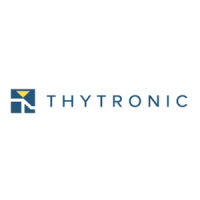
Do you have a question about the Thytronic NG10 and is the answer not in the manual?
| Brand | Thytronic |
|---|---|
| Model | NG10 |
| Category | Protection Device |
| Language | English |
Highlights critical safety information, symbols, and precautions for handling the device.
Covers product standards, mechanical, insulation, voltage, and EMC data.
Details auxiliary power supply, phase current, residual current, and binary input circuits.
Parameters for rated values, input sequence, and polarity selection.
Details thermal protection and residual overcurrent/ground fault functions.
Details low impedance ground fault, differential protection, and breaker failure functions.
Covers trip circuit supervision, selective block, CT supervision, and demand measures.
Illustrates the device layout and modular component allocation.
Explains the three fundamental elements of the Pro-N relay software: base, RTOS, and DSP.
Details six output relays, their contact types, operating modes, and logic.
Parameters for setting relay name, nominal currents, and primary values.
How Pt100 probes acquire temperature and provide thermal protection.
Explains use, operation, settings, and characteristic curves for 50N/51N-87NHIZ.
Details Breaker Failure, Logical Block, and Selective Block functions for this protection.
Continues the description of blocking logic for the residual overcurrent/ground fault protection.
Detailed logic diagram for the first element of the protection.
Detailed logic diagram for the second element of the protection.
Detailed logic diagram for the third element of the protection.
Explains operation and settings for the 64REF protection.
Discusses operating conditions, comparison criteria, and enable parameters.
Details Breaker Failure, Logical Block, and Selective Block functions for 64REF.
Introduces differential protection and defines current values.
Explains current compensation and polarity matching calculations.
Conditions for start of the first threshold and external fault stabilization.
Operation of second threshold, breaker failure, logical block, and selective block.
How saturation detector stabilizes current loops and its detection criteria.
Logic diagrams for the biased dual slope characteristic and blocking functions.
Explains BF operation, start conditions, and parameters.
Logic diagram illustrating the breaker failure element.
How logical block function uses binary inputs to block protection trips.
Using pilot wire input and binary inputs for selective blocking.
Using output relays and pilot wire for selective block, and operational behavior.
Monitors phase CTs and relay phase input for failures using symmetry criteria.
Monitors trip circuit for anomalies like missing opening or auxiliary voltage faults.
Diagnostic functions for CB position, wear estimate, and opening time.
Parameters for fault records in COMTRADE format and data exchange standards.
Instructions for flush mounting screw access and projecting mounting steps.
Details for mounting the case on an electric control board.
Details on current input connections, specifications, and protective ground connection.
Details connection requirements and parameters for USB, Ethernet, and RS485 ports.
Factory default settings and procedure for modifying nominal current settings.
Pre-energization checks for auxiliary voltage, CT settings, wiring, and screws.
How to download, install, and use the ThyVisor software.
Explains MMI buttons, display, and how to read variables.
Reading and modifying RS485 and Ethernet parameters via MMI.
Details settable parameters for Base, Inputs, and Relays.
Details settable parameters for Residual Overcurrent/Ground Fault (IE> Element).
Details settable parameters for Residual Overcurrent/Ground Fault (IE>>, IE>>> Elements), 64REF, Differential, CT Saturation, and Id> Element.
Details settable parameters for Id>> Element, Trip Circuit Supervision, Selective Block, and Breaker Failure.
Details settable parameters for Residual Overcurrent/Ground Fault (IE>>, IE>>> Elements).
Details settable parameters for 64REF, Differential, CT Saturation, and Id> Element.